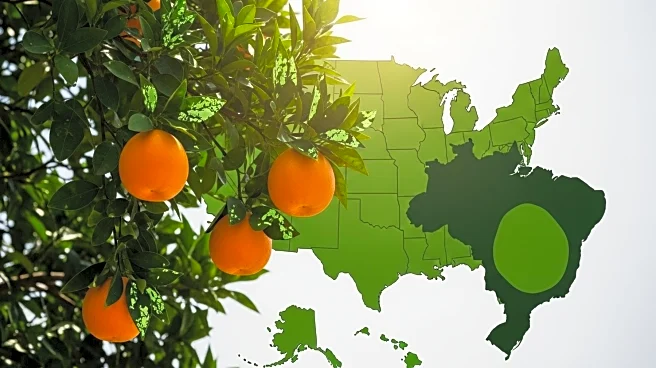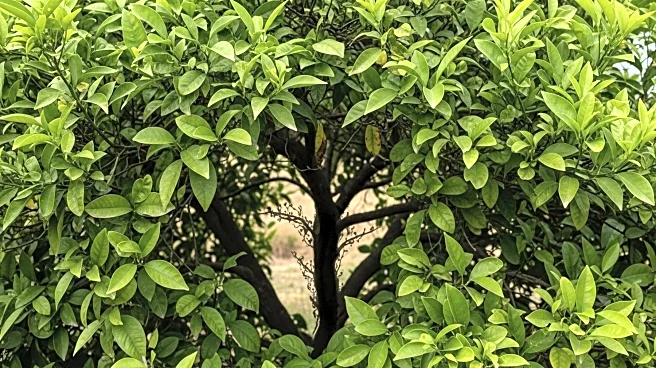What's Happening?
Bacterial greening disease, caused by bacteria transmitted by the Asian citrus psyllid, has infected nearly 48% of Brazil's citrus belt, according to Fundecitrus, an industry-funded research group. This marks the eighth consecutive year of increased infections in Brazil, the world's largest orange producer and exporter of orange juice. The disease has severely impacted Brazil's orange production, with the 2024/2025 season's output estimated at 230.9 million boxes, the smallest in several years. The disease results in fruits that are green, misshapen, and bitter, making them unsuitable for sale as fresh fruit or juice. In the United States, Florida has been grappling with citrus greening disease for over a decade, leading to reduced output and increased dependency on Brazilian orange juice imports.
Why It's Important?
The spread of bacterial greening disease in Brazil poses significant challenges for the U.S. citrus industry, particularly in Florida, which has already been affected by the disease. The dependency on Brazilian imports could increase, affecting U.S. market dynamics and pricing. The disease has caused substantial economic losses, estimated at $120 million annually in Brazil, and has led to the death of millions of trees globally. The persistence of favorable weather conditions for the bacteria in Brazil exacerbates the issue, potentially impacting global citrus supply chains and trade relations.
What's Next?
Efforts to combat citrus greening disease are likely to intensify, with potential advancements in agricultural technology and disease management practices. Stakeholders in the U.S. and Brazil may seek collaborative solutions to mitigate the impact on production and trade. The U.S. citrus industry might explore alternative sources or invest in research to develop resistant citrus varieties. Monitoring and response strategies will be crucial in managing the disease's spread and minimizing economic losses.
Beyond the Headlines
The ongoing battle against citrus greening disease highlights broader agricultural challenges, including the need for sustainable pest management and the impact of climate conditions on crop health. The situation underscores the importance of international cooperation in addressing agricultural diseases that transcend borders. Long-term solutions may involve genetic research and innovation in crop protection, potentially reshaping the future of citrus farming.













